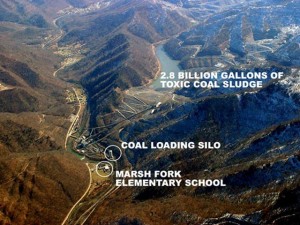From an Article by Brett Israel, UC Berkeley News, March 29, 2018
Photo: Land degradation, caused by human activities like natural resource extraction and pipeline construction, is a global threat to humans and animals
More than 100 experts from 45 countries have published a three-year study of the Earth’s land degradation, calling the problem “critical” and saying that worsening land conditions undermine the well-being of 3.2 billion people.
The report was published by the Intergovernmental Science-Policy Platform on Biodiversity and Ecosystem Services (IPBES) on March 26. Providing the best-available evidence for the dangers of land degradation for policymakers, the report draws on more than 3,000 scientific, government, indigenous and local knowledge sources.
Rapid expansion and unsustainable management of croplands and grazing lands is the most extensive cause of land degradation, creating significant loss of biodiversity and ecosystem services, which include food security, water purification, energy sources and other contributions essential to people, the report says. The problem is so critical that a co-chair of the report said, “The degradation of the Earth’s land surface through human activities is pushing the planet towards a sixth mass species extinction.”
Land degradation is also an underappreciated factor contributing to global conflict and migration, among other problems, according to study co-author Matthew Potts, UC Berkeley associate professor in forest economics in the College of Natural Resources.
“Land degradation presents unique and persistence challenges to humanity,” Potts said. “This assessment shows that we are at a crossroads and must take urgent action to combat land degradation and restore degraded land if we want to create a happy and healthy planet for all humanity.”


{ 1 comment… read it below or add one }
Learning from past climatic changes
Christophe Lécuyer, CNRS UMR 5276, Laboratoire de Géologie de Lyon, Villeurbanne, France.
Science 29 Jun 2018: Vol. 360, Issue 6396, pp. 1400-1401
DOI: 10.1126/science.aau1690
Summary
Over the course of the past 540 million years, five catastrophic mass extinction events occurred as a result of global climate changes. Those periods of large-magnitude warming or cooling resulted from catastrophic events such as asteroid impacts, paroxysmal volcanic activity, or peculiar geographic distributions of continents (1).
The last of these mass extinction events occurred 66 million years ago at the Cretaceous/Paleogene (K/Pg) boundary, which is well known for the vanishing of ammonoids and nonavian dinosaurs (see the figure). On page 1467 of this issue, MacLeod et al. (2) provide evidence that the temperature of surface marine waters off the coast of Tunisia rose by 5°C in the 100,000 years after the K/Pg boundary.